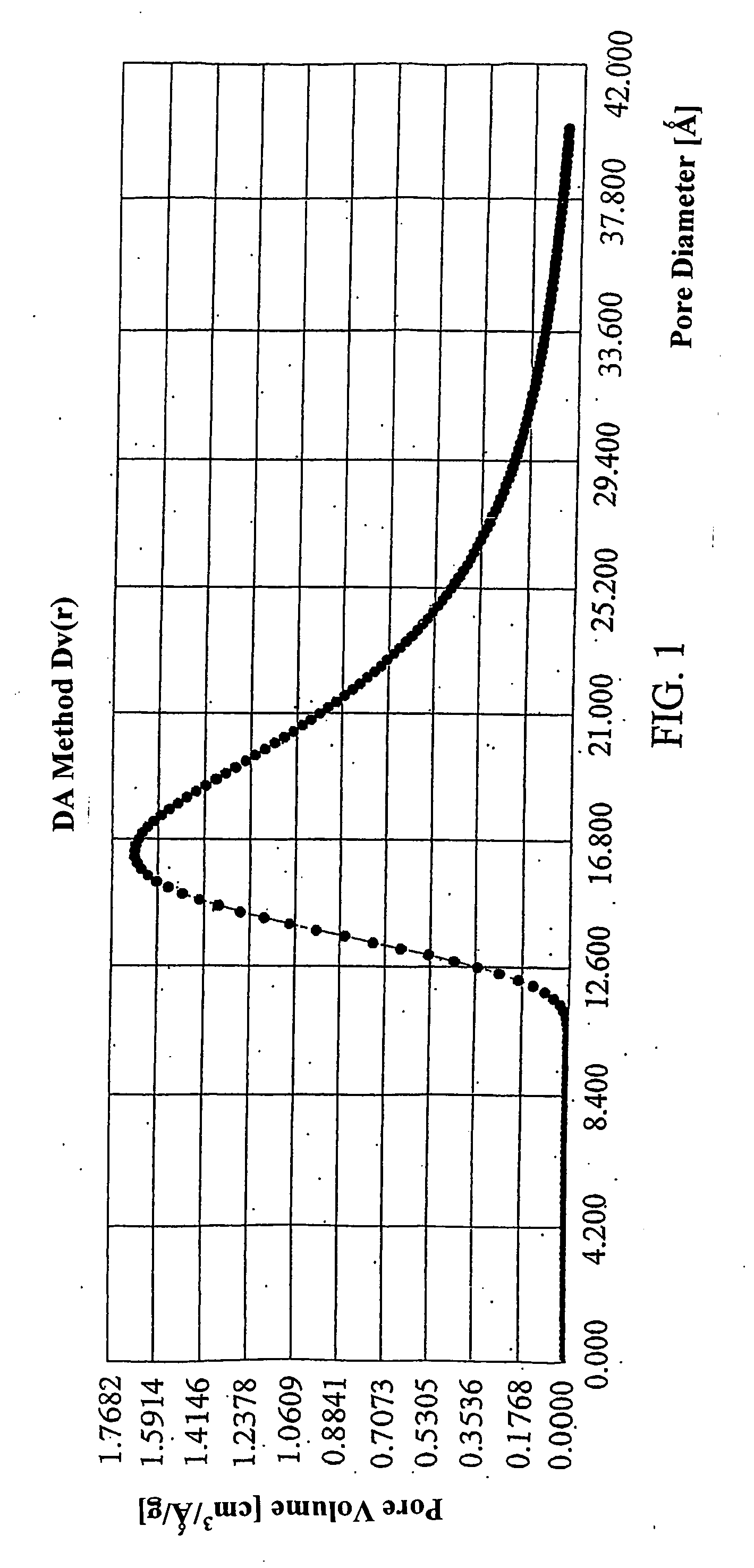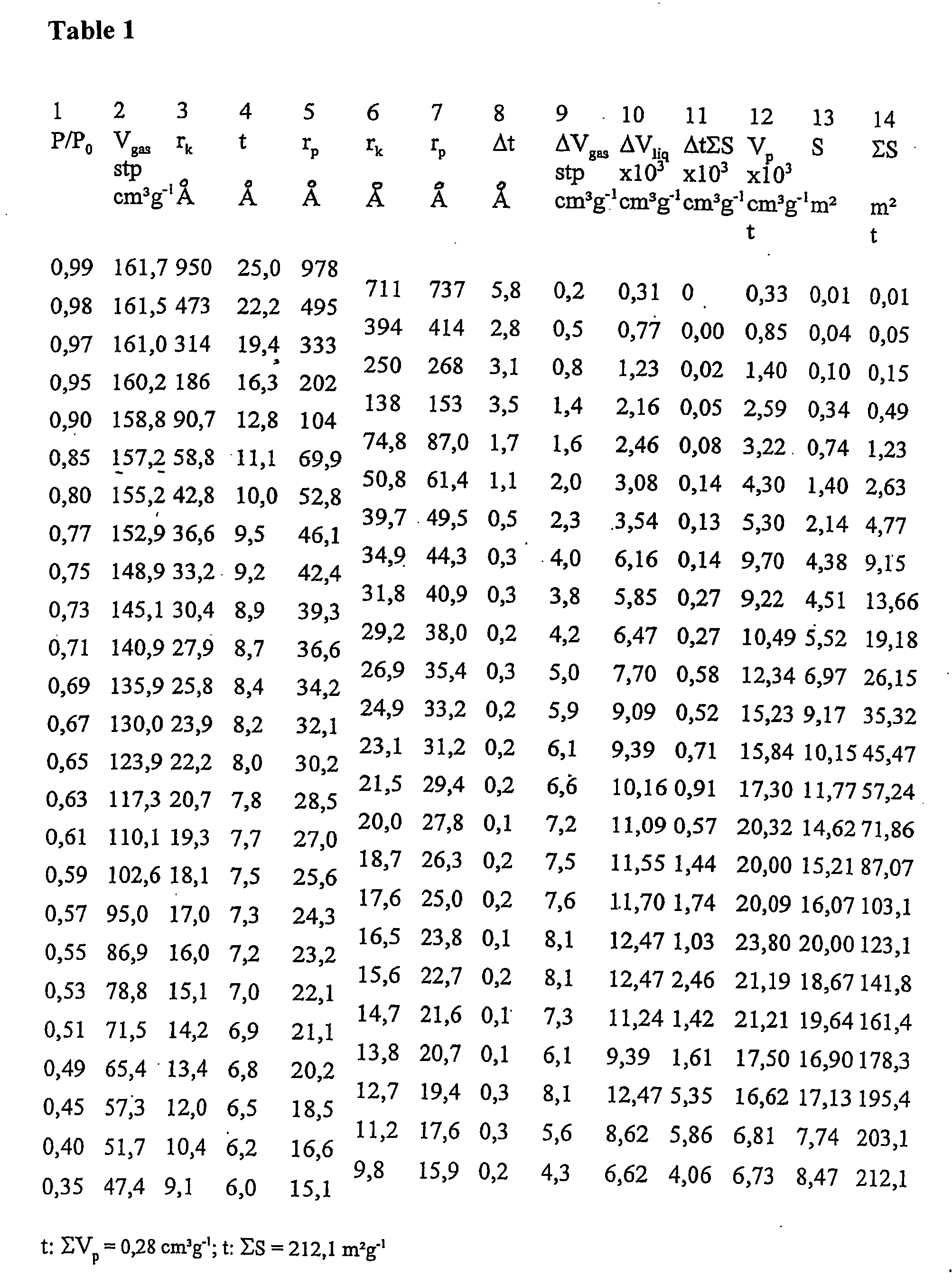Spherical active carbon
a technology of active carbon and spherical carbon, which is applied in the direction of physical/chemical process catalysts, fire extinguishers, other chemical processes, etc., can solve the problem that the adsorption capacity is not yet sufficient for all requirements
- Summary
- Abstract
- Description
- Claims
- Application Information
AI Technical Summary
Benefits of technology
Problems solved by technology
Method used
Image
Examples
example 2
Determination of the BET Surface
[0022] Spherical active carbon from Example 1 was investigated using the method for determining the BET surface according to Brunauer, Emmett, Teller. The adsorption is essentially based on the interaction of electrically charged particles or dipoles of the adsorbent (the adsorbing substance) and of the adsorptive (the substance, which is adsorbed). By observing the amount of an adsorptive adsorbed at a constant temperature and constant pressure by a solid adsorbent in an equilibrium condition, the adsorption isotherm is obtained. The adsorbed amount, the adsorbate, is related to the mass of the adsorbent. The analyzed course corresponds to the isotherm types II (according to the classification of Brunauer, L. S. Deming, W. S. Deming and Teller) with the adsorbed amount on the ordinate and the equilibrium pressure on the abscissa. For the evaluation of such isotherms, which in particular occur for higher gas pressures and lower temperatures, too, the...
example 3
Determination of the Pore Size Distribution
[0025] For the determination of the pore size distribution, the desorption isotherm is needed for thermodynamic reasons. For nitrogen as the adsorbate at its normal boiling point of 77.4 K, the Kelvin equation is used as follows,
rK=4.15 / logp0 / p,
[0026] including the physical parameters from the determination of the largest pore radii r from the following equation: r=-(2*8.85*34.6) / (8.314*107*77.4*2.303*log 0.99)=950*10-9 cm,
[0027] wherein 8.85 erg cm−2 is the surface tension of N2 at 77.4 K, 34.6 cm3 the molar volume of N2 at 77.4 K, 950*10−9 cm the pore limit size and 0.99 the ratio p / p0.
[0028] The term rk designates the radius of the pores, in which the condensation occurs with the required relative pressure. This radius (Kelvin radius or critical radius) is not the actual pore radius. After some encountered adsorption points, the pore wall is occupied already before the next condensation, and rk designates the radius after evap...
example 4
Determination of Fractal Dimension
[0036] The fractal dimension serves for characterizing surfaces and is based on the fractal geometry for describing the topography of real surfaces. The fractal dimension D is an ideal parameter for describing the roughness of real surfaces. This term was created by the mathematicians Hausdorff and Besicovitch, who have shown that D needs not to be integer for non-standard figures (surfaces), and that for every mathematical set a real number D exists. Hausdorff has detected for the simplest category of these real numbers (positive and finite) that it contains the Cantor set as well as the Koch curve. With regard to the determination of the fractal dimension D for inner surfaces of adsorbents, two methods have proven suitable, since they only need for their calculation a gas sorption isotherm. This is on the one hand the Neimark-Kiselev (NK) method and on the other hand, as described below, the Frenkel-Halsey-Hill (FHH) method.
[0037] The FHH method...
PUM
| Property | Measurement | Unit |
|---|---|---|
| Fraction | aaaaa | aaaaa |
| Fraction | aaaaa | aaaaa |
| Fraction | aaaaa | aaaaa |
Abstract
Description
Claims
Application Information
 Login to View More
Login to View More - R&D
- Intellectual Property
- Life Sciences
- Materials
- Tech Scout
- Unparalleled Data Quality
- Higher Quality Content
- 60% Fewer Hallucinations
Browse by: Latest US Patents, China's latest patents, Technical Efficacy Thesaurus, Application Domain, Technology Topic, Popular Technical Reports.
© 2025 PatSnap. All rights reserved.Legal|Privacy policy|Modern Slavery Act Transparency Statement|Sitemap|About US| Contact US: help@patsnap.com



